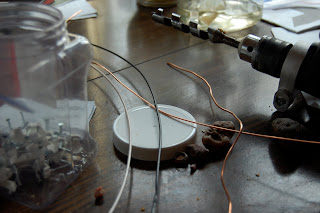Outside a blizzard raged under the dusk skies. Beyond that the beauty of our homeland still lay poised to heal all who experienced a side of their own race that no body should ever have to endure.
I will not write about what I heard and saw on the first floor of that building. Rather, I'm trying to deal with those memories and forget the details. A good night's rest would help too. Instead, I write about the healing powers that our home place and the community around it can have on someone.
Even while restraining myself with the frustrating inability to help my friends upstairs: all I wanted to do was run. My flight instinct kicked in. There has never been a more grounding feeling than simply driving up our road that night. Even though the wind and snow and darkness persisted outside,inside the walls that I built was home. I was with my wife, growing baby and dog in front of the wood stove and warm. I was alive and physically well.
The next day I drove further into the woods. All around the wintry north woods accepted me for what I was thinking: as horrible of thoughts as they were. The thoughts unraveled the various emotions I was reliving. The horrific memories unwound like line off a fishing reel: still coiled with potential. Besides having to pick myself back up I felt better with every rotation of tire on that lonesome forest road. Pine trees and frozen streams all around.
I was suddenly surrounded by friends. The end of the road that day was a dog kennel. If there is ever a time to pick yourself off the ground and perform, it is while training dogs (except perhaps for parenthood). The companionship they provided that day led to many miles of exhilarating dog mushing. Once again the world around me helped free my mind.
The sight of Lake Superior at the bottom of the Arrowhead Trail is like standing in the grandest cathedral you have ever stepped foot in. Whether to you that place is in Rome or Yosemite that sanctuary for me is Superior. My soul was healing with every storm squall that passed over her dark waves.
I've learned some cruel lessons lately. But really, I've also been reminded of the grandeur that surrounds me. And that helps...















































